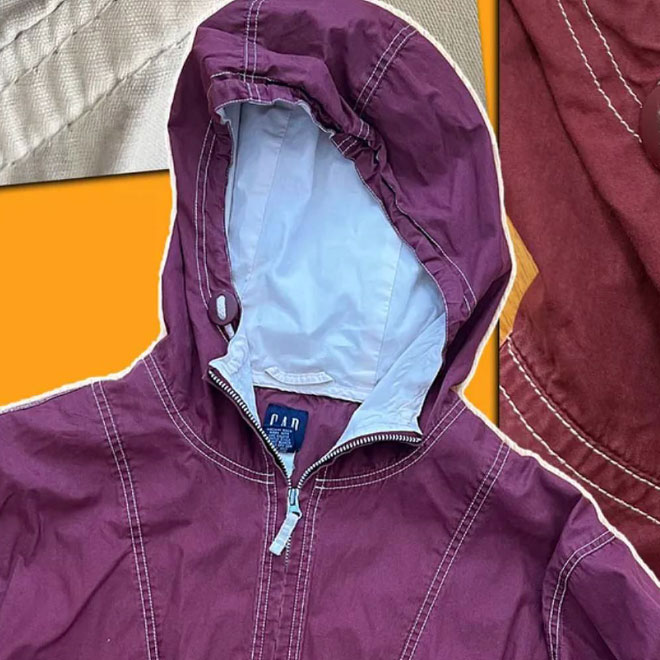
Should Gap Have Resale Only Stores? Absolutely.
Reviving Vintage Fashion and Sustainability to Drive Traffic to Stores
Estimated Read Time: 6 Minutes
Once upon a time, in a pre-internet, retail fantasy world long, long ago, a clothing brand was birthed that would become so ubiquitous, so cool, and so loved, that it’s CEO Millard (Mickey) Drexler would compare it to finding a carton of milk – you could find it on every block.1
He came pretty close to this vision—the ‘milk’ was indeed almost everywhere. What began as a modest corner store in San Francisco offering records, tapes, and jeans blew up into thousands of namesake stores and offshoot brands, all under the same corporate roof, all doing incredibly well. The original name of this fantastic brand was based on a well-worn 60’s term at the time of its founding: the ‘generation gap.’ But some 30 years later in the new fairy tale world of exploding retail, the brand no longer had anything to do with that premise.
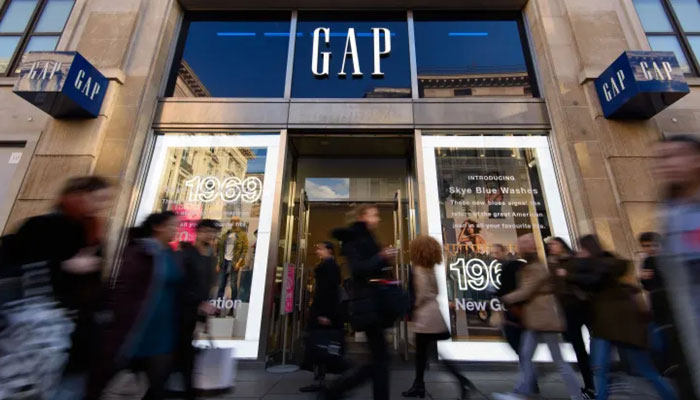
The Magical Brand Called Gap and it’s Downturn
Gap was magic for everybody around the world. Rock stars posed in Gap t-shirt ads, movie stars frequented their London stores, and thousands of Americans flocked to try their wares daily. Gap had something ‘cool-comfortable’ for everyone, and it seemed like the enchantment would never fade.
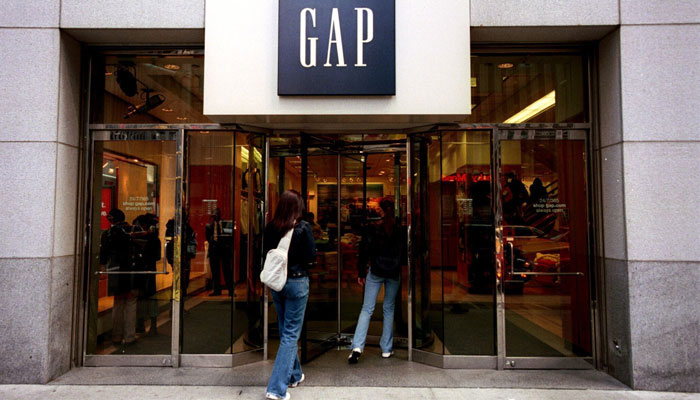
The Gap bubble would burst though, along with others of its kind, in the early 2000’s. CEO turnover, the loss of the high-profile milk salesman in Gap’s case, mediocre merchandise, cool irrelevance, and massive store closings marked this downturn. Sad. How could something so hot become slushy so quickly? Welcome to American retail, an industry that never ceases to disrupt and innovate.
But have no fear, Mickey; not all is lost.
The Resurgence of Vintage Fashion
As most retailers know, every time we get about 30 years away from a period of fashion, a style, or a look, sure enough, it can (operative term) circle back and become cool once again. And so here we are, at about that time when an entirely new generation of customers, one that has no idea what the “generation gap” even means, are discovering the charm of vintage Gap merchandise from its golden era. Luckily for them, the brand was so saturated that the merchandise from back in its heyday is still everywhere. Looks like Mickey’s dream really did come true. And to some keen-eyed fashionistas, it’s looking pretty good when paired with the latest sneakers, trendy hair colors, Gucci bottoms, and full sleeve tats. Presto!
Like many retro items or looks, part of the appeal of vintage Gap is its unapologetic un-coolness, paradoxically making it cool. The look is so un-cool that it’s cool. Wearing something that only the hippest few can appreciate is a fashion statement in itself, certified by the bemused expression of parents who just don’t ‘get-it.’ But this particular joke (vintage Gap) might just be big enough for a lot of people to get, especially if they’ve got something that works sitting in the back of their (or dad’s) closet, next to the Goodwill pile. This phenomenon has already revitalized brands like Levi’s, Converse, Doc Martens, and Gucci. So, in the case of Gap, vintage G.A.P. sweatshirts, in all their un-cool glory, makes perfect sense, so much so that their retro goods have been reported to be outselling their new products.2
Gap Inc.’s Strategic Resurgence
And of course, Gap Inc., trying to scramble back to their retail glory days, is seizing the moment and capitalizing on the vintage trend. They now offer vintage looks directly thought their website, catering to the growing demand for retro fashion.
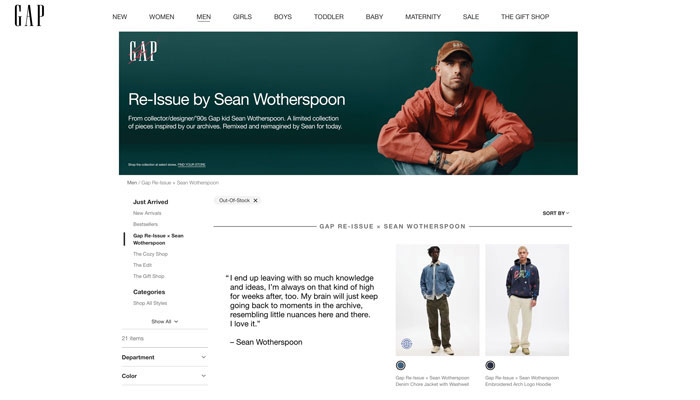
But it’s not just about economics for Gap; it’s also about improving their sustainability report card. In 2020, Gap Inc. forged a partnership with threadUP, the world’s largest resale marketplace. This collaboration encourages customers to participate in the circular fashion economy by trading in their used clothes for credits, redeemable at Gap, Athleta, Banana Republic, or Janie & Jack.3
A Recommendation for Retail Brands
Which brings us to the main point: Sure, Gap gets it, but they’re going about selling re-sale in the wrong way. While we applaud Gap’s current efforts, we propose a recommendation for them and any retail brand looking to dive into the resale market: Don’t limit yourselves to online resale programs; commit to building in-store resale offerings.
Read Ken Hewe’s Robin Report article on resale concepts.
Online resale/used/second-hand/vintage programs have their merits, but given the expenses involved in acquiring, photographing, listing, and shipping single items online, the online resale model may never be profitable. You can read one of Retail Dive’s many articles on the topic to learn more (start here and here). Understanding this reality has led us to believe that the solution, especially for cases like Gap, is resale ONLY stores.
Embracing In-Store Resale
One reason we propose resale only stores is that Gap has the existing real estate! But bigger than that…why not?! IKEA, REI, Dick’s, Urban Outfitters are all systems GO on the idea of resale stores, and they’ve reaped the rewards. IKEA, for instance, reports to have increased foot traffic (the golden goose), revenue and received an eco-brand boost by implementing in-store resale programs.
Learn more about IKEA’s Buy Back & Resell program.
We get it, the operational and logistical challenges of these types of stores is daunting, especially to specialty retailers who have become overly process oriented over the years. So naturally, to them, the method of executing resale should be dispatched: i.e. let someone else, like thredUP, do it. But with the growing demand for sustainable shopping options and the potential to bring foot traffic back to physical stores, it’s a sales channel worth exploring. Don’t rely solely on third-party platforms–do it yourself! A Gap re-sale store could become what it once was–a treasure hunt to find something unique yet familiar, and a whirlpool of customers that ‘get it.’ That seems like something Gap might be interested in. Actually, who wouldn’t be?
Listen to Your Customers
And, of course, the key is to listen to your customers. In our resale report published last year, we found that 50% of consumers would increase their visits to specialty retail locations (which of course, includes Gap) if they offered used or resale merchandise. That is not an insignificant number. Consumers are sold on resale – for the price, the thrill of the treasure hunt, and the overall experience. And brands like Gap, with a strong history of customer loyalty and existing real estate, are well-positioned to capitalize on this trend. We’re hoping the Thred Up deal is a stop gap and that brands start taking resale seriously.
Read: Can Resale Save the Store?
If you’re having trouble using your imagination, here’s what a great resale Gap might look like.
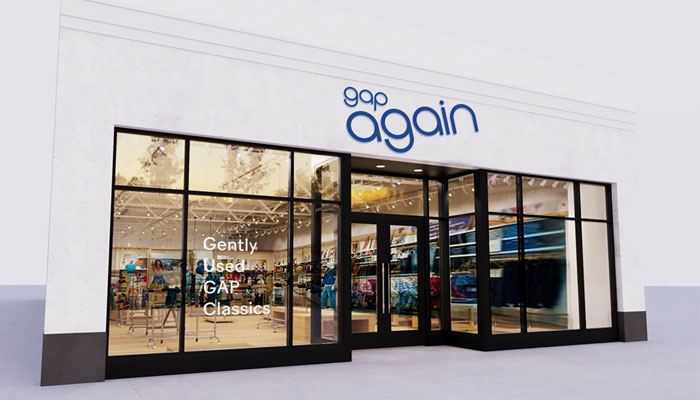
The retail industry is witnessing the revival of vintage fashion and a growing appetite for sustainability. Embracing this trend not only aligns with the current zeitgeist but also presents an opportunity for brands to thrive in an ever-evolving industry. To be clear, we don’t think everyone can do “vintage” with their own brand, and we don’t think that ALL Gap stores can be Gap resale stores. But from our vantage point, Gap can either serve as an example, demonstrating how retail brands can maximize returns and adapt to changing times and consumer preferences with in-store resale, or just fall short, leaving the potential benefits of resale behind. We believe it would be a brilliant and profitable move for a company that could use a little milk in their annual report.
C’mon Gap, you’re still a unicorn! Help take us back to that fairy tale.

 Lee Peterson
Lee Peterson


